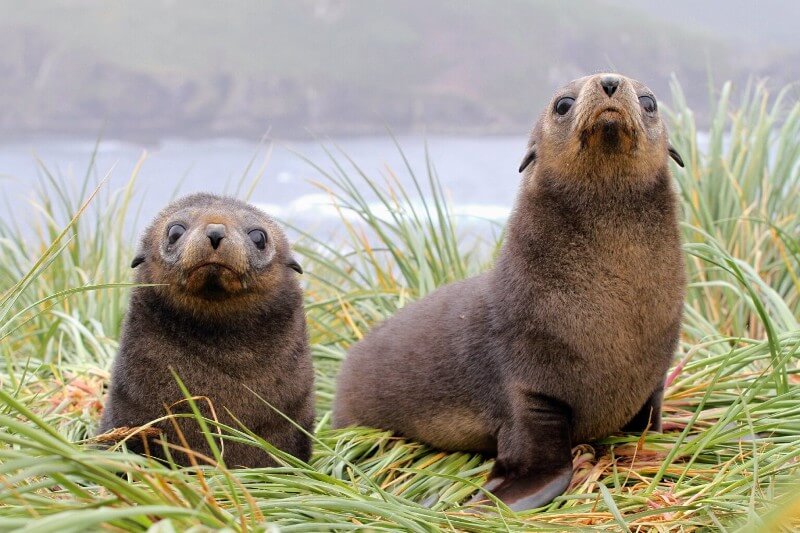Antarctic fur seals that were hunted to near extinction have recovered but now face dangerous decline because of a lack of food, new research suggests.
The study of fur seals, almost all of which live on the sub-Antarctic islands of South Georgia, shows that the modern-day population peaked in 2009 at about 3.5 million – a healthy number, although significantly less than previously estimated. But a more detailed count of animals living on a particular South Georgia island called Bird Island also shows the seals are finding it harder to find krill – a small shrimp-like crustacean – with numbers crashing in the last decade.
The research is carried out by scientists at the British Antarctic Survey (BAS) and colleagues and is published this week (date) in the journal Global Change Biology.
Jaume Forcada, a BAS scientist who led the new study and is lead author on the paper, says:
“We found both good and bad news about the fur seals. The population has recovered very impressively throughout the twentieth century when seal hunting was banned. But twenty-first century changes to the abundance of krill in the Southern Ocean are now threatening these iconic animals all over again.”
Prized and hunted for their pelts in the 1700s and 1800s, by the early 1900s there were too few animals left to hunt commercially. Combined with stronger conservation protections, plenty of food and fast breeding, the population boomed and recovered much more quickly than other previously hunted species in the region, including humpback whales. By the year 2000, South Georgia was reportedly home to between 4.5 million and 6.2 million fur seals. However, re-examination of this data and the methods used suggests that these booming population numbers were not accurate – offering a further challenge to scientists now trying to understand the current decline.
Forcada continues: “Our new results show this was a massive overestimation. That matters because the fur seal population size is used to judge the overall health of the species and the wider Antarctic ecosystems. And it turns out that neither were as robust as people thought.”
Counting seals is harder than it may appear. Surveys typically assess numbers at seal breeding beaches, but these figures are skewed because most male fur seals at South Georgia don’t usually breed until they are ten-years old, and then only for two to three years. That means some 80% of the male population is missing from surveys, and how researchers account for this can overstate the overall count.
The new estimate of 3.5 million animals comes from several week-long helicopter surveys of South Georgia from 2007 to 2009 and improved population assessment methods.
Fur seal populations at Bird Island, a well-studied location in the northwest of South Georgia, showed among the fastest rebounds over the last century or so. But the new survey identified a worrying reversal: numbers peaked in 2009 and have declined by 7% each year since. That takes the island’s current population down to a level not seen since the 1970s, when the population was still recovering.
Scientists looked for evidence of krill fishing pressure on fur seal population dynamics, but this was not found to be significant. However, initial analysis of climate data shows that that rapidly rising sea temperatures in the region correlate with the seal population decline – pointing to a loss of krill as the most likely cause.
“Krill can make up to 80% or more of the diet of fur seals at South Georgia, so they experience catastrophic declines in the number of pups produced and survival of individuals when environmental conditions remove the krill from their immediate foraging areas,” Forcada says.
This sensitivity of fur seals to krill availability, along with the existence of longer-term population data, is what makes them an important known indicator for the ecosystems around Bird Island. More detailed research is needed to establish why krill around Bird Island is now less available, and how widespread the change could be across the rest of the Southern Ocean.
“If the pressure on the fur seals at Bird Island also applies to the greater South Georgia population there could be an ongoing decline there as well. So even though there were three and a half million of them there, the fast decline at Bird Island tells us they could be in trouble,” Forcada says.
Ninety years of change, from commercial extinction to recovery, range expansion and decline for Antarctic fur seals at South Georgia, by Jaume Forcada, Joseph I. Hoffman, Olivier Gimenez, Iain J. Staniland, Pete Bucktrout, Andrew G. Wood is published in Global Change Biology on Monday 16 October.


